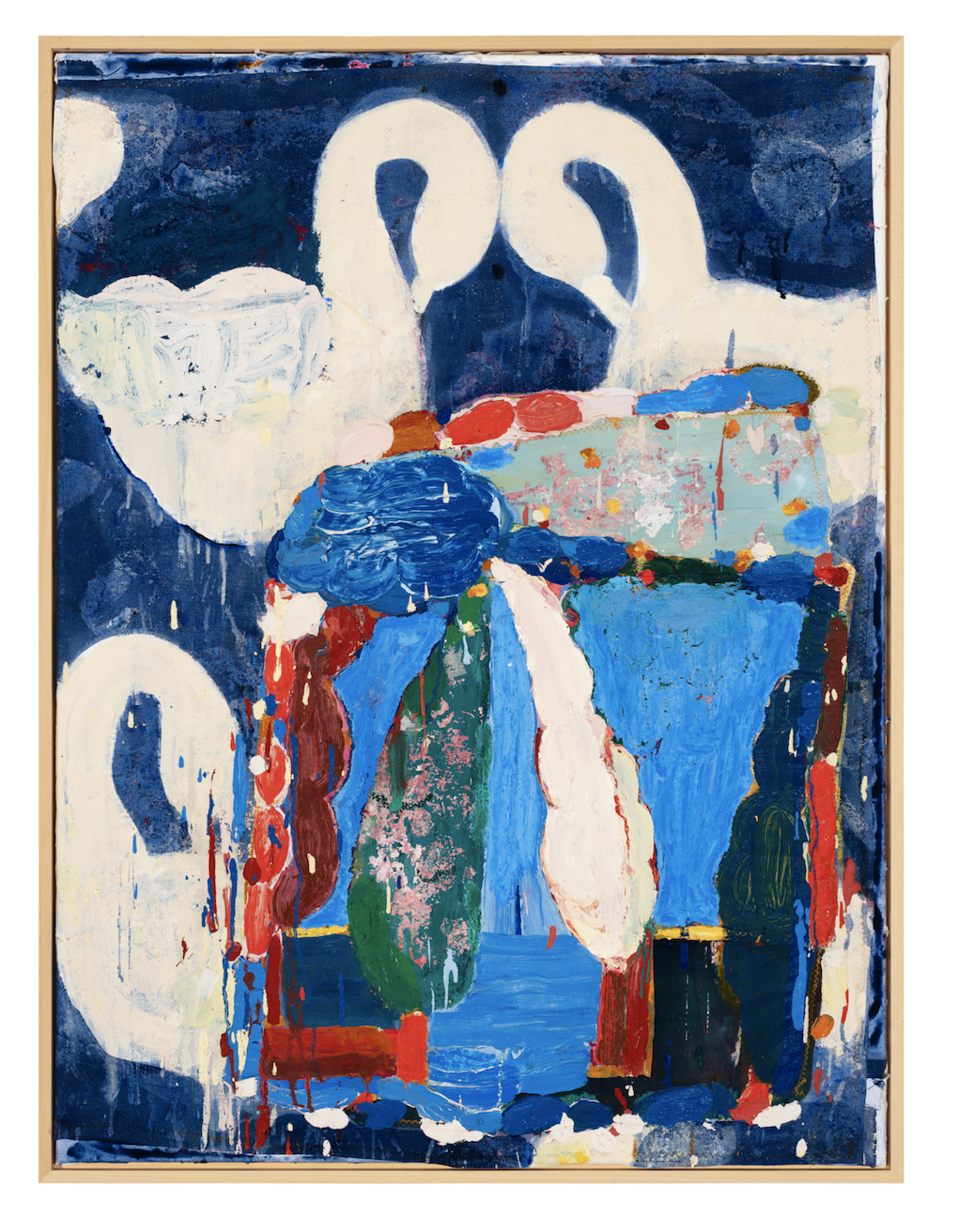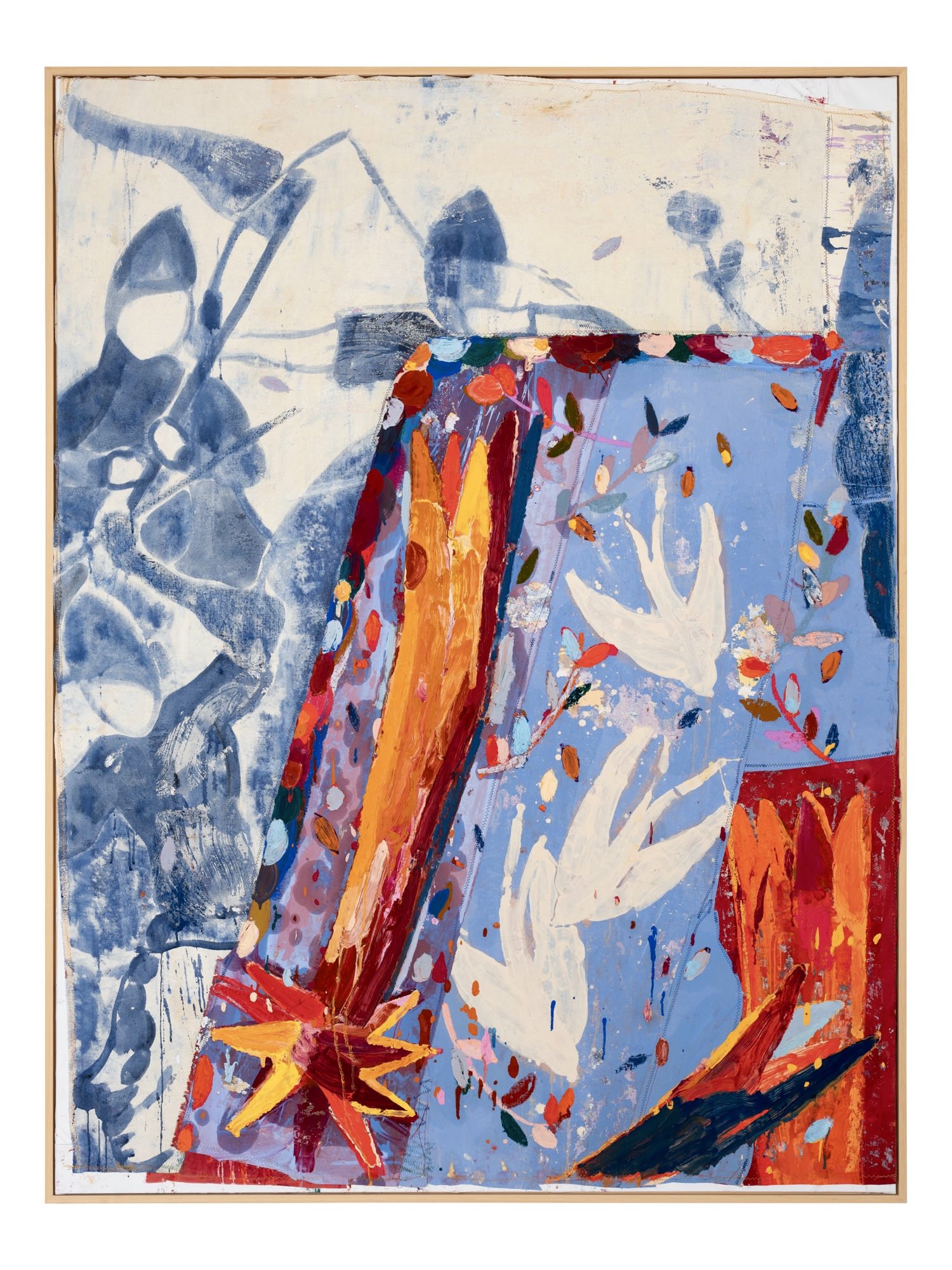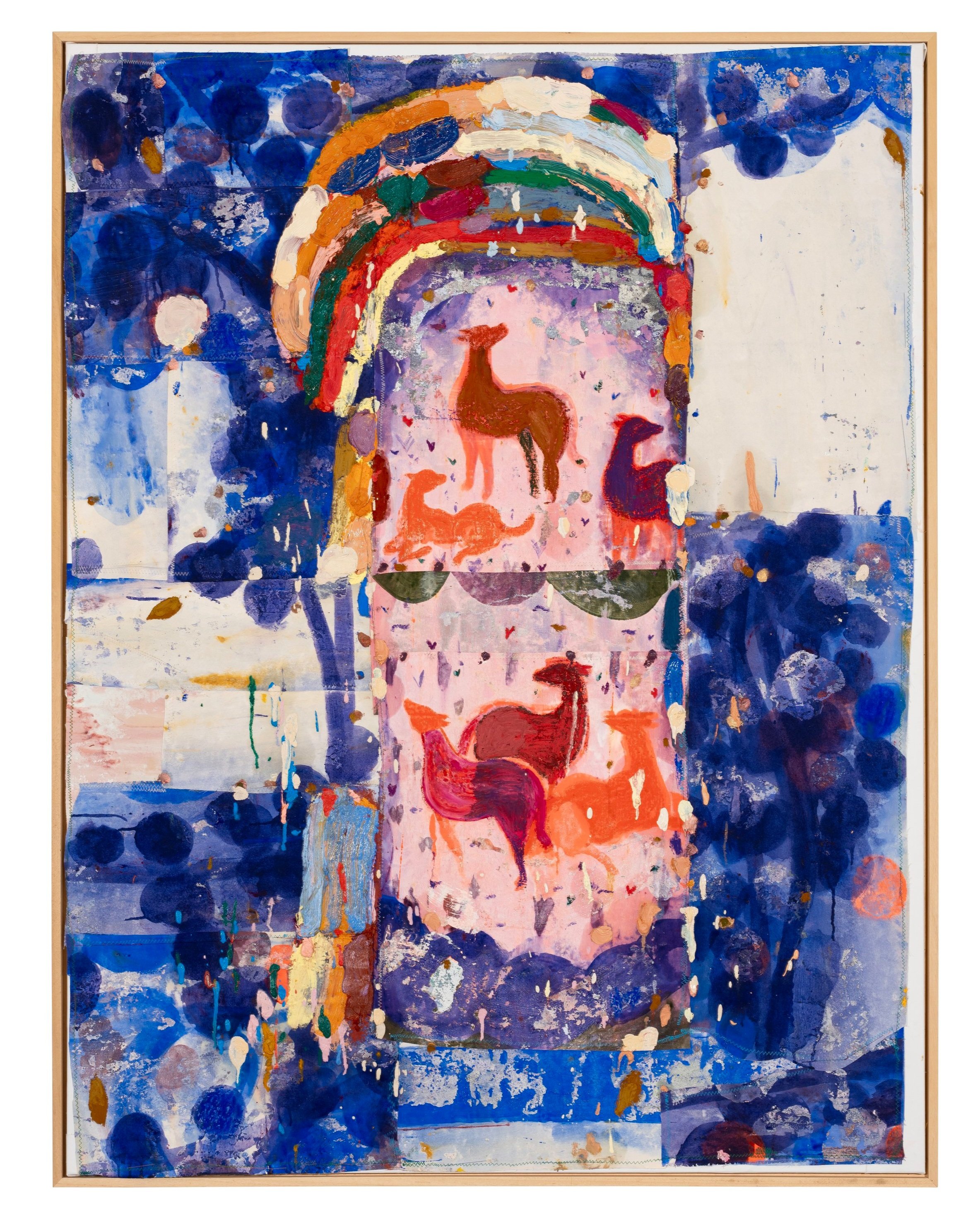Gommaar Gilliams: The Ballad of My Lover’s Boat @ Arusha Gallery
Through dynamic and bold artworks steeped in rich narratives, Gommaar Gilliams invites viewers into a storybook landscape for his newest solo exhibition: The Ballad of My Lover’s Boat at Arusha Gallery. Unfolding like fables of old, Gommaar Gilliams’ work is deeply rooted in mythology, drawing inspiration from heroic and ethereal tales that have been passed down through generations. Gilliams' artistry delves into the wondrous tapestry of myth and legend, offering viewers a glimpse into worlds both familiar and fantastical.
Gilliams oscillates between abstraction and representation, skilfully blending colours and textures to create a tapestry of allegorical symbols and human forms. His compositions are adorned with celestial elements and delicate floral patterns, drawing viewers into enchanting realms teeming with fairytale castles and dynamic wildlife. Forging a link with the past, his motifs and style are informed by an interest in the history of painting, tapping into how humans are constantly drawn to the same symbolic imagery, allegories, and notions throughout history, as if pulled by an invisible thread. Seamlessly weaving in references from elements of European, Eastern and American art, he draws inspiration from a wealth of iconography and cultural history. Dreamy and melancholic at once, Gilliams conveys wistfulness, nostalgia, childhood innocence, and collective memory in all its bittersweetness.
Gommaar Gilliams, The Ballad of My Lover’s Boat, 2024. Installation View. Photo Courtesy: Sophie Carson & Arusha Gallery.
Gommaar Gilliams, That House In My Pocket, 2024. Oil, oil stick, acrylic on painted and stitched fabrics. 200 x 150 cm. Photo Courtesy: Arusha Gallery.
Born in 1982 in Lier, Gommaar Gilliams is an extraordinary Belgian painter. He studied Visual Arts at the LUCA School of Arts in Brussels and then furthered his education with a Master's degree in Painting from PXL College in Hasselt. Gilliams has exhibited widely across Europe and the US. Through his expansive body of works, he examines the complexities of emotions and desires, as well as the stories and imagery that connect all humans across time and place.
Gommaar Gilliams, The Ballad of My Lover’s Boat, 2024. Installation View. Photo Courtesy: Sophie Carson & Arusha Gallery.
The title of Gommaar Gilliams’ latest show, The Ballad of My Lover’s Boat, does not reference anything in particular, having been chosen together by himself and the gallery. Yet all the same, it draws from a place of collective memory. Serving as a poetic symbol for the works across the show, the language is certainly evocative. Considering Gilliams’ penchant for storytelling and symbolism, the title mirrors the journey the show takes viewers: with the "boat" symbolising a vessel of stories and memories, carrying the viewers through the artist’s vibrant and narrative rich compositions, offering a space for introspection and connection. The notion of a "ballad" likewise implying a lyrical quality to the exhibition, where each artwork serves as a stanza in a larger poetic narrative. From the title alone, viewers are told that they are about to embark on a experience of storytelling.
The show is composed of a body of 10 new works, each large scale and abundant with materiality and texture. Stitched together and built upon themselves, the physical creation of his art reflects the collage of myth and meaning that Gilliams’ works expresses. The process of creating these works begins with soaking fabrics in acrylic paints. Then stitching these dyed fabrics together, he adds oil paints and oil sticks, imbuing the works with layers upon layers of colour. This layered approach resembles the creation of a fresco, not only building upon the piece's history but also exploring the dynamic interplay between paint absorption and surface presence. The result of this process creates a timeless aspect to his works, becoming both a relic of the past and present.
Gommaar Gilliams, Everyday Lullaby, 2024. Oil, oil stick, acrylic on painted and stitched fabrics. 140 x 180 cm. Photo Courtesy: Arusha Gallery.
Signature symbols such as birds, boats and tigers leap off the canvases, in perpetual motion. Gilliams employs these motifs across his works to build his story-like imagery. Swans, associated with grace, purity and transformation, whilst tigers evoke strength and exoticism. Boats reinforce ideas of journey, exploration, transitions. Childlike and nostalgic, the motifs immediately transport viewers into this storybook world, coloured by fantastical and wild imagination. By utilising universally recognisable symbols across his works, Gilliams’ establishes his visual language, inviting viewers to read his artworks and connect through these timeless images.
Gommaar Gilliams also uses colour as a dynamic and evolving aspect of his artistic practice. When he begins a painting, he is guided by intuitive ideas about which colours to incorporate and how they will interact within the composition. Similar to the motifs within his works, colour serves as a fundamental tool, shaping narrative and guiding the viewer's journey through the art. For Gilliams, colour is not merely a decorative element but a powerful means of storytelling. It informs the emotional tone of a piece and guides the audience's experience, directing their attention and conjuring specific feelings or moods. As a result, Gommaar Gilliams’ artworks are characterised by their resplendent colour, evoking a sense of childlike hope, yet beneath the vibrant surface lies a undercurrent of deep longing, yearning and nostalgia.
Gommaar Gilliams, The Ballad of My Lover’s Boat, 2024. Installation View. Photo Courtesy: Sophie Carson & Arusha Gallery.
Gilliam’s works should be read as lines of poetry, compelling viewers to contemplate history and introspect their own lived experiences with a quiet and recognisable relatability. Within his art lies an idyllic world veiled in a melancholic haze, evoking a revised remembrance of past times coloured by imagination and longing for an arcadian utopia. Yet, amidst this bittersweet nostalgia, there emanates a soft spirituality and living magic. Gommaar Gilliams casts a spell over his creations, transforming colour, texture and symbols into moments of myth and melancholia.
Gommaar Gilliams: The Ballad of My Lover’s Boat is on view at Arusha Gallery until 30th March 2024.
Nabila Bulbul,
Editor-in-Chief, MADE IN BED









